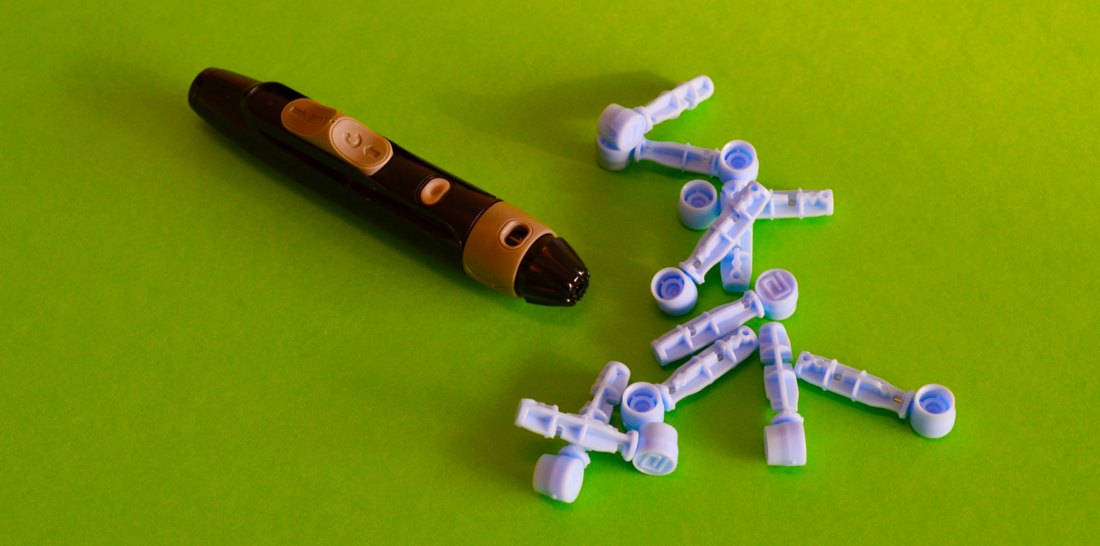5 Tips for Managing Diabetes: Practical Steps for Stable Blood Sugar
5 Tips for Managing Diabetes: Practical Steps for Stable Blood Sugar
By our Contributing Author*
The key to general health in the diabetes management journey is maintaining stable blood sugar levels, which works best with specific and deliberate actions.
And these doable actions, which range from making conscious carbohydrate choices to engaging in regular physical activity, enable people to take charge of their health and enjoy satisfying lives.
Managing diabetes with lifestyle changes such as these is extremely important to the success of living with this chronic disease.
So, in this article, we’ll take a quick look at five essential pointers for successful diabetes care and explore these crucial tactics for maintaining steady blood sugar levels.
5. Mindful Carbohydrate Choices
Because carbohydrates directly affect blood sugar levels, it is important for people with diabetes to be aware of how much of these nutrients they consume.
Choose fiber-rich, complex carbs such as those found in whole grains, fruits, and vegetables.
Why?
Because fiber prevents abrupt rises in blood sugar levels by slowing down the digestion and absorption of sugars.
Steer clear of processed carbohydrates and sugary snacks in favor of whole, unprocessed foods that provide you consistent energy without creating sharp swings in your blood sugar.
4. Regular Physical Activity
An essential component of managing diabetes is exercise.
Regular exercise increases insulin sensitivity, which enhances your cells’ ability to utilize insulin and control blood sugar levels.
Aim for 2 1/2 hours or more a week of moderate aerobic exercise, such as cycling, swimming, or brisk walking.
To increase muscle mass, incorporate strength training activities into your routine at least twice a week. It’s a long-time, proven piece of effective diabetes control.
Before beginning a new fitness program, make sure to speak with your healthcare physician to make sure it meets your individual needs.
3. Portion Control and Meal Timing
Controlling portion sizes is essential in managing diabetes. Be mindful of portion sizes to avoid overeating, which can lead to spikes in blood sugar levels.
Additionally, consider spacing your meals evenly throughout the day. Eating smaller, balanced meals every 3-4 hours can help maintain stable blood sugar levels.
Avoid skipping meals, as it can cause blood sugar levels to drop too low. Consistent meal timing can support better glucose regulation and prevent sudden fluctuations in insulin levels.
2. Staying Hydrated
Although it’s sometimes forgotten, staying properly hydrated is one of the easiest in practical diabetes management and essential for those with diabetes.
Water is essential for several body processes, such as eliminating pollutants and controlling blood sugar.
Controlling blood sugar levels can be negatively impacted by dehydration, which can be avoided by drinking enough water throughout the day.
Avoid drinking sugary drinks and instead choose water, herbal teas, or sparkling water with a squeeze of lemon for flavor without the added sugar and calories.
1. Regular Blood Sugar Monitoring
Regular blood sugar monitoring is essential for managing diabetes effectively.
Using a glucometer to regularly monitor your blood sugar levels at home can give you important information about how your body reacts to various foods, activities, and medications.
You can choose your food and way of life with knowledge if you comprehend these patterns.
Establish a monitoring regimen that is in line with your treatment strategy by working closely with your healthcare practitioner.
When it comes to controlling diabetes, information truly is power, and regular monitoring gives you the ability to take charge of your health.
These doable tactics work as beacons in the fight against diabetes, enabling people to face everyday life with self-assurance and mastery.
Individuals diagnosed with diabetes can take proactive measures toward better health in the future by following a conscious diet, exercising, and drinking enough water.
They should also regularly monitor their blood sugar levels and understand that managing diabetes via stable blood sugar strategies involves not only physical health, but also mental and emotional health.
With the correct information and perseverance, anyone can achieve blood sugar stability and live a happy life, despite the difficulties associated with diabetes.
Adhere to these habits and see doctors frequently, and yes, even a diabetic can welcome the path toward living a healthy, active life.
The owner of AHealthyFoodworld.com is an official independent affiliate ambassador of the individual(s)/companies found on this website. The individual(s) and/or companies, and their products, services, etc. listed on this site are theirs and theirs alone, and they are solely responsible for them and any and all things, be they positive or negative, that come from you paying for and/or using them, and you using our site means that you understand and irrevocably agree to and with such. Please contact their official websites if you have any questions and/or concerns. PLEASE NOTE: The expressed views of the above contributing author are theirs and theirs alone and do not necessarily reflect the views of AHealthyFoodworld.com. Also, the content on this website is for information purposes only. None of it, including the food, drinks, supplements, products/services, and anything and everything else about which it speaks, is intended to diagnose, treat, cure, or prevent any disease, and you accessing it/them, be it purposefully or accidentally, means you clearly and irrevocably understand such. Thank you.
Citations:
1. American Diabetes Association. (n.d.). Carbohydrate Counting. www.diabetes.org/nutrition/carbohydrate-counting
2. American Heart Association. (2023). Recommendations for Physical Activity in Adults and Kids. www.heart.org/en/healthy-living/fitness/fitness-basics/aha-recs-for-physical-activity-in-adults






